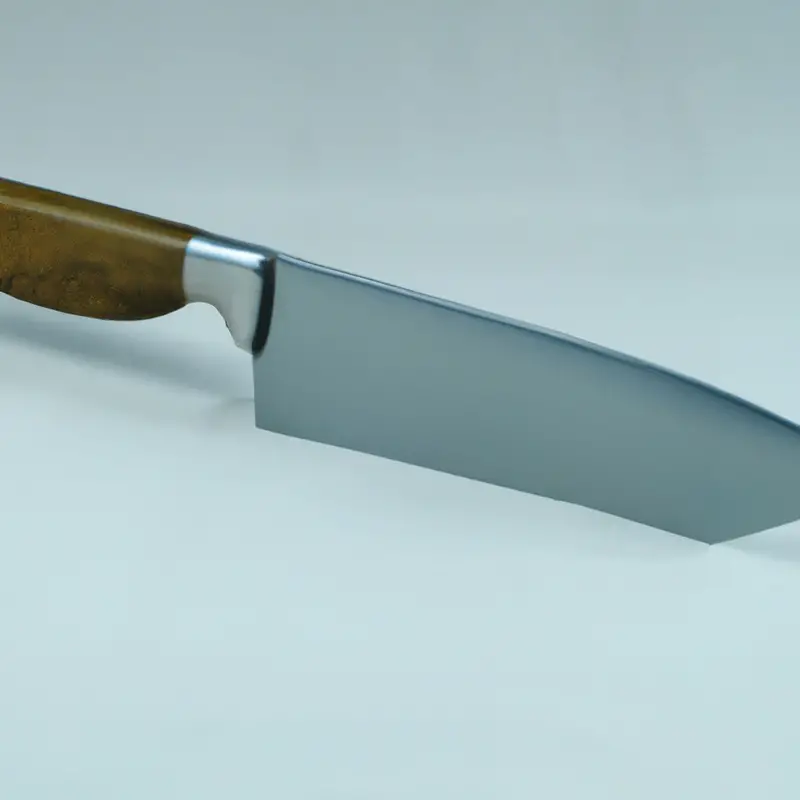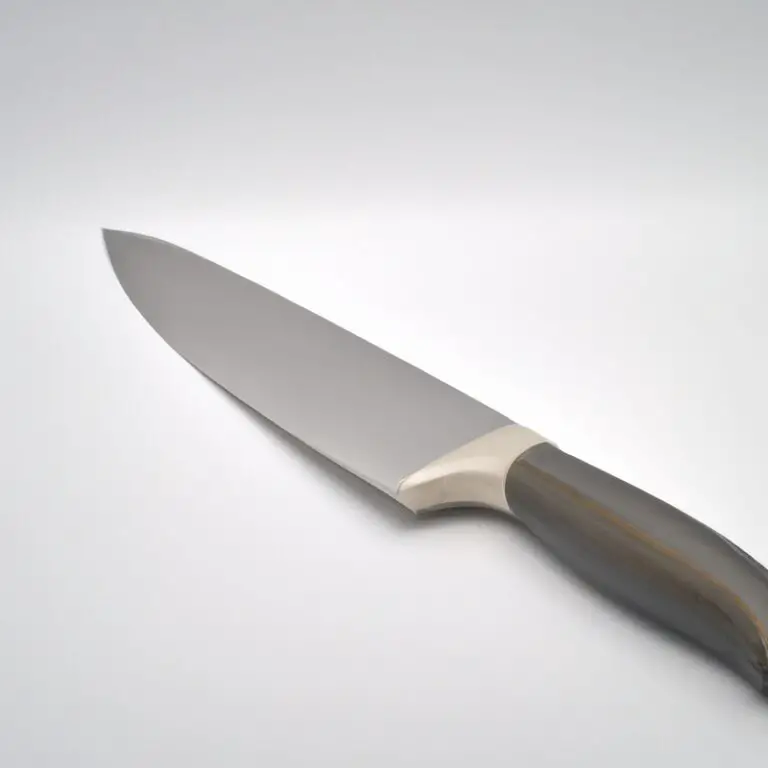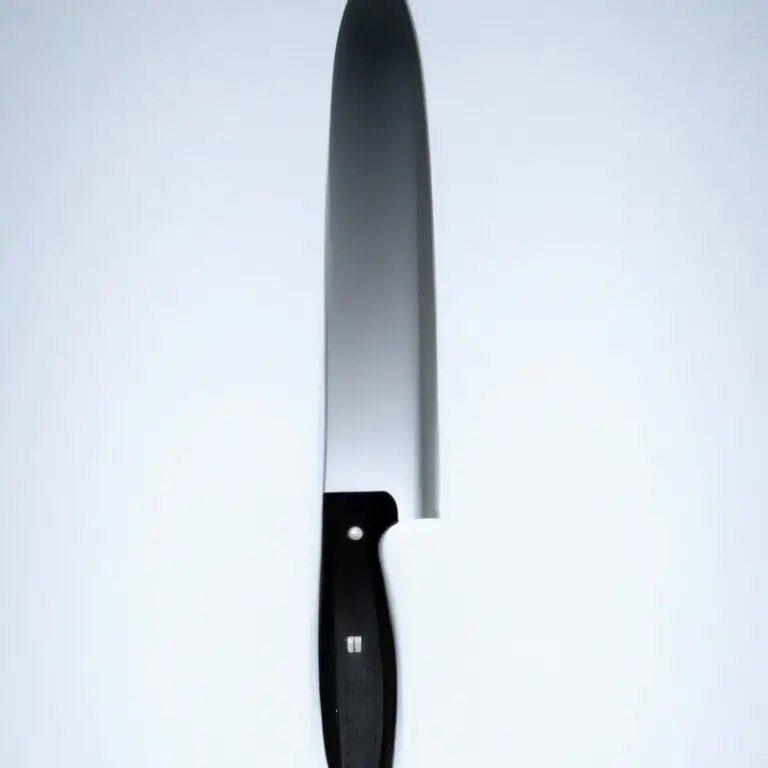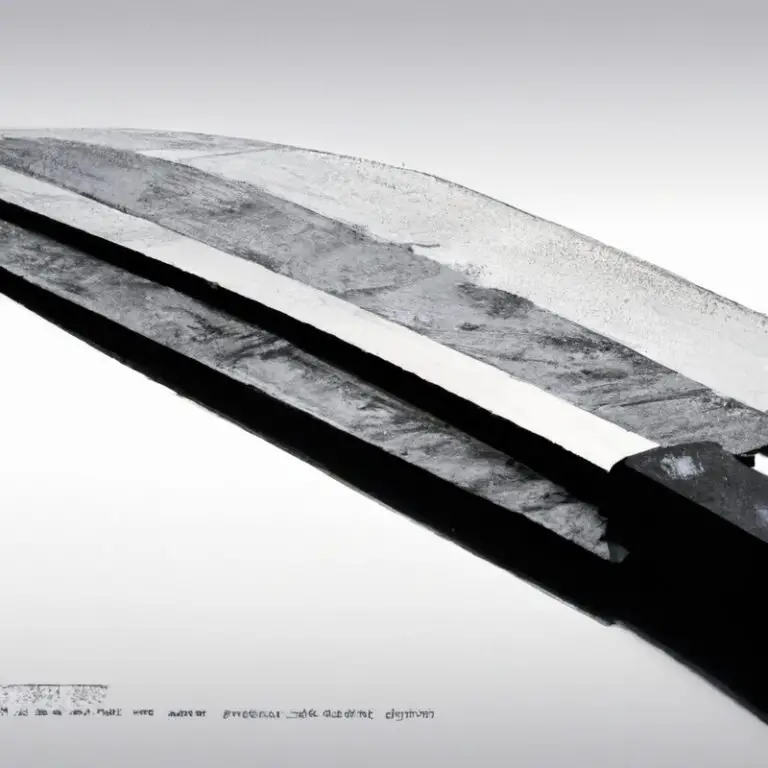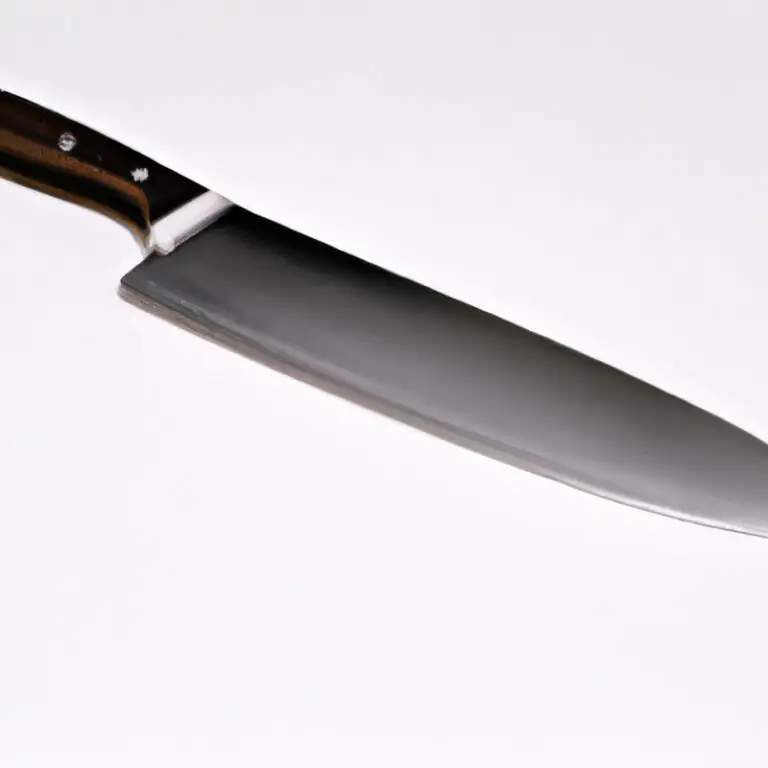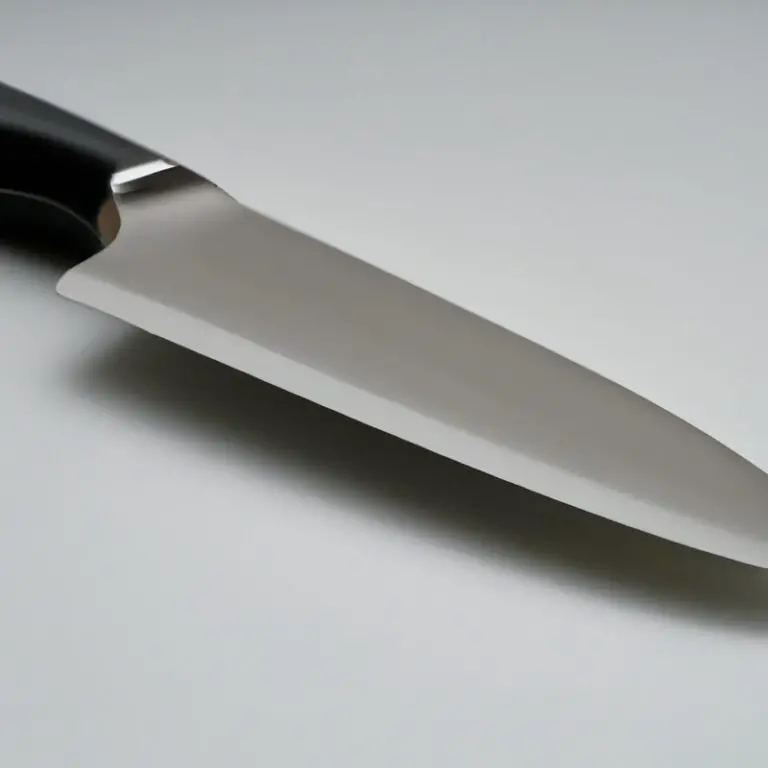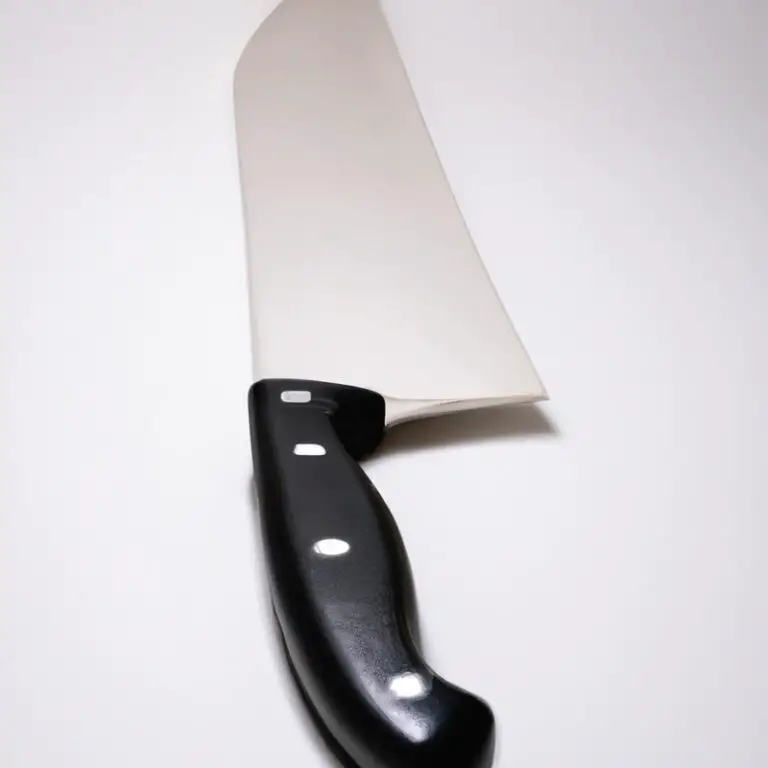How To Protect The Edge Of a Chef Knife During Storage? Tips
Key Takeaways:
- Proper storage of a chef knife is crucial to maintain its sharpness and prolong its lifespan.
- Covering the edge of the knife with a sheath or blade guard can prevent damage and injury during storage.
- Storing knives in a knife block or magnetic holder can minimize contact with other utensils and protect the blade from dulling or chipping.
- Regularly cleaning and oiling the blade can prevent rust and corrosion, preserving the knife’s quality over time.
A well-maintained chef knife is the backbone of any kitchen professional or home cook. However, improper storage can easily damage the knife’s blade edge, making it dull and ineffective.
Therefore, it is crucial to protect the knife’s edge during storage.
As a veteran chef who has learned this the hard way, I have gathered my top tips and strategies for storing chef knives in the right way. From choosing the perfect storage option to cleaning your knife before storing, I will walk you through all the steps to ensure your knife stays sharp and in pristine condition.
Read on to learn how to safeguard your chef knife’s edge and prolong its lifespan.
| Methods | Advantages | Disadvantages |
|---|---|---|
| Knife sheath | – Protects the knife edge from damage – Easy to use and store | – Can trap moisture and develop rust – Can be an additional cost |
| Magnetic knife holder | – Keeps knife edge protected – Easy to access and store knives | – May scratch or nick knife edge – Limited sizes available |
| Knife block | – Protects the knife edge from damage – Can store multiple knives | – Can trap moisture and bacteria in crevices – Takes up counter space |
| Cloth wrap | – Affordable option – Protects the knife edge from scratches | – Requires frequent washing – Can trap moisture and develop rust |
Understanding the Importance of Proper Chef Knife Storage
Proper chef knife storage is crucial in maintaining the sharpness and quality of your knives. Storing your knives loosely in a drawer or with other utensils can lead to dings, nicks, and blunting of the blade edges.
It can also increase the risk of accidents when reaching for a knife.
Investing in the right storage option, whether it be a knife block, magnetic strip, or sheath, can protect your knives from damage and keep them within easy reach for efficient meal prep. Proper storage can also extend the lifespan of your knives, saving you money in the long run.
Common Mistakes to Avoid When Storing Chef Knives
Common Mistakes to Avoid When Storing Chef Knives:
- Storing knives loosely in a drawer without any protective coverings can cause scratches and damage to both the blade and the edge.
- Using a knife block with horizontal slots can dull the blade. The blade can hit the wooden sides and each other, causing blunting.
- Placing knives in a dishwasher or leaving them in water can cause rust and corrode the blade, causing structural damage.
- Storing knives together can cause chips and dullness on both the blades.
- Failing to clean knives correctly before storage can lead to bacteria accumulation, bad odor, and decreased lifespan.
By avoiding these common mistakes and choosing the right storage option, you can keep your chef knives in excellent condition, ensuring peak performance and a longer lifespan.
Choosing the Right Storage Option for Your Chef Knife
When it comes to storing your chef knife, choosing the right storage option is crucial in preventing damage to the blade’s edge. Here are some of the most popular storage options and their pros and cons:
- Knife blocks: Knife blocks are a popular choice as they keep your knives easily accessible on your kitchen counter. However, they can collect dirt and debris, which can be difficult to clean. Also, if the slots are not properly sized for your knives, the blade can get damaged from rubbing against the slots.
- Magnetic strips: Magnetic strips are a great option if you have limited counter space. They keep your knives within reach while taking up minimal space. However, some chefs are concerned that magnetic strips can damage the blade’s temper.
- Drawer inserts: Drawer inserts keep your knives out of sight and can protect them from dust and debris. However, if the insert is not properly sized for your knives, they can bang against each other, dulling the edge.
- Blade guards: Blade guards are a cheap and simple solution to protect your knives when stored in a drawer or in transit. However, they are not ideal for long term storage as they can trap moisture, leading to rust and corrosion.
Consider your personal needs and preferences when choosing a storage option for your chef knife. Whatever you choose, make sure it fits your knife properly and keeps it protected from damage.
Pros and Cons of Different Types of Knife Storage
Different types of knife storage have various pros and cons, and it’s important to choose the right one for your needs. Drawer Storage: Pros: Drawer storage keeps your knives out of sight and easily accessible.
Cons: Knives can be damaged or dulled if they knock against other utensils or the inside of the drawer.
Magnetic Strip: Pros: Magnetic strips keep your knives visible and easily accessible, with no risk of damage from contact with other knives or utensils. Cons: Magnetic strips are not suitable for storing knives with serrated edges, as they can damage the magnetic strip.
Knife Blocks: Pros: Dedicated knife blocks keep knives organized, easily accessible, and protected from damage.
Cons: They take up counter space and require regular cleaning. DIY Solutions: Pros: DIY storage solutions can be customized to fit your unique space restrictions and aesthetic preferences.
Cons: They may not provide the same level of protection as dedicated knife storage options, and improper construction could lead to knife damage or injury.
Overall, it’s essential to choose a storage option that balances accessibility and protection, keeping your chef knife’s edge sharp and safe while also making it easy to access when you need it.
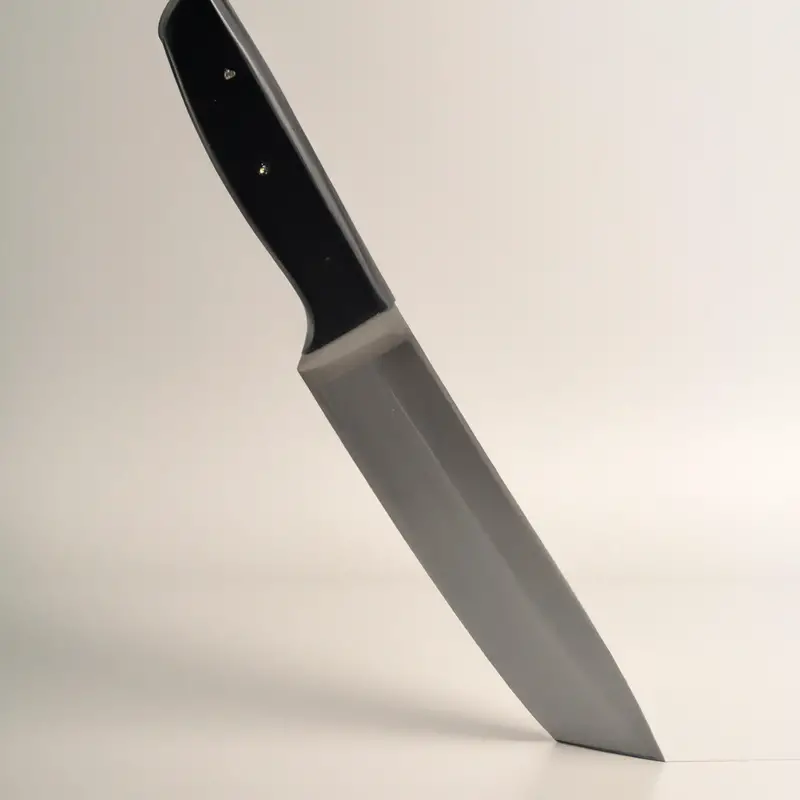
How to Clean Your Chef Knife Before Storage
To maintain the quality and sharpness of your chef knife, it’s essential to clean it properly before storage. Here are some tips to clean your knife effectively:
- Use hot, soapy water and a soft sponge to wipe the blade carefully.
- Rinse the knife using hot water and dry with a clean towel.
- Avoid using abrasive materials such as steel wool to clean the blade.
- Never put your chef knife in the dishwasher, as the harsh detergent and high heat can damage the blade.
- Apply a small amount of food-safe mineral oil to the blade to prevent rust and corrosion.
- Store the knife in a safe and dry place, away from moisture and humidity.
By following these simple steps, you can ensure that your chef knife remains sharp and durable, ready for its next use.
Tips for Safely Storing Your Chef Knife in a Drawer
To safely store your chef knife in a drawer, consider the following tips:
- Use a sheath or blade guard to protect the knife edge from contacting other objects in the drawer.
- Keep the drawer clean and free from moisture to prevent rust from forming on the blade.
- Store the knife away from other utensils or tools in a separate compartment or designated slot to avoid accidental cuts.
- Consider using a knife block or magnetic strip for storage if drawer storage is not feasible.
By implementing these tips, you can safeguard your chef knife’s edge and keep it in pristine condition for extended periods.
How to Properly Store Your Chef Knife in a Magnetic Strip
Storing your chef knife in a magnetic strip is a convenient and popular option. Here are some tips to ensure proper storage:
- Clean your knife before storing it to prevent corrosion and to keep the blade in good condition.
- Ensure that the magnet has enough strength to hold the knife securely and avoid any accidental falls.
- Place the knife upside down in the strip to avoid any potential damage to the blade’s edge.
- Avoid overcrowding the strip and maintain at least an inch of space between each knife.
By following these simple steps, your chef knife will stay in great condition and remain easy to access when needed.
Benefits of Using a Chef Knife Block for Storage
Using a chef knife block for storage not only gives you a secure place to store your knives, but it also has several benefits. One benefit is that it keeps your knives organized and easily accessible.
A knife block also protects the blade’s edge since it doesn’t come into contact with other knives or hard surfaces.
Additionally, a knife block is a stylish addition to your kitchen and can keep your knives in good condition for longer. Lastly, knife blocks come in various materials, including bamboo, wood, and plastic, making them a versatile option for any kitchen decor.
DIY Chef Knife Storage Solutions for Small Kitchens
DIY Chef Knife Storage Solutions for Small Kitchens: If you have a small kitchen, storing chef knives can be a challenge. However, with some DIY knife storage solutions, you can make the most of what you have and keep your knives stored safely and securely.
- Magnetic Knife Strips: Mounting a magnetic knife strip on a clear wall in your kitchen is an excellent way to store your chef knives without taking up valuable counter or drawer space. You can easily access your knives when cooking and can arrange them according to your preference.
- Custom-Built Knife Drawer Inserts: A wooden drawer insert reduces wear and tear on your knives while ensuring that they stay in place. You can easily get custom-built knife inserts from a carpenter or build them yourself; it only requires some woodworking and measuring skills.
- PVC Pipe Knife Block: Creating a PVC pipe knife block is an incredibly efficient way of storing your knives securely. All you need to do is to cut a few lengths of PVC pipe and attach them to a wooden block.
- Magnetic Knife Rack: A magnetic knife rack is another practical and adjustable solution to store chef knives almost anywhere in your kitchen. You can install the knife rack on a wall or side of a cabinet, providing quick access and keeping your equipment off the counter.
In summary, there are different DIY chef knife storage solutions that can fit in your small kitchen and keep them organized, safe, and secure.
How to Maintain Your Chef Knife’s Edge During Storage
To maintain the edge of your chef knife during storage, you should take care not to expose it to moisture, acids, or other corrosive agents. Keep it dry and clean, and store it in a safe and secure location to avoid any accidental damage.
Avoid placing your chef knife in a drawer with other items that could scratch or chip the blade.
Consider using a sturdy chef knife block, magnetic strip, or sheath for safe storage. Remember to regularly check the edge for any signs of dullness or damage and sharpen as needed.
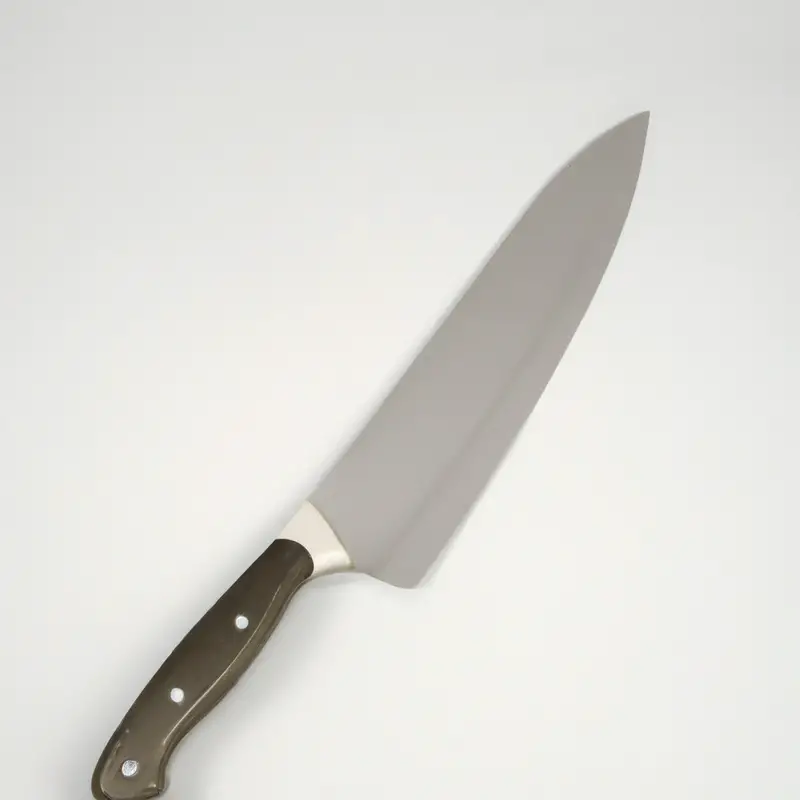
Final Verdict
Proper storage of your chef knife is crucial in maintaining its sharp edge and prolonging its lifespan. From choosing the right storage option to cleaning and maintenance, every step in the process plays a vital role in the protection of your knife’s cutting edge.
By avoiding common mistakes, such as storing your knife with other utensils or leaving it wet, you can ensure that your knife remains sharp and ready for use whenever you need it.
Whether you prefer a knife block or magnetic strip, make sure to keep your knife dry, free from moisture, and stored away from other objects in your kitchen. With these tips and tricks, you can extend the life of your chef knife and continue to create culinary masterpieces for years to come.

